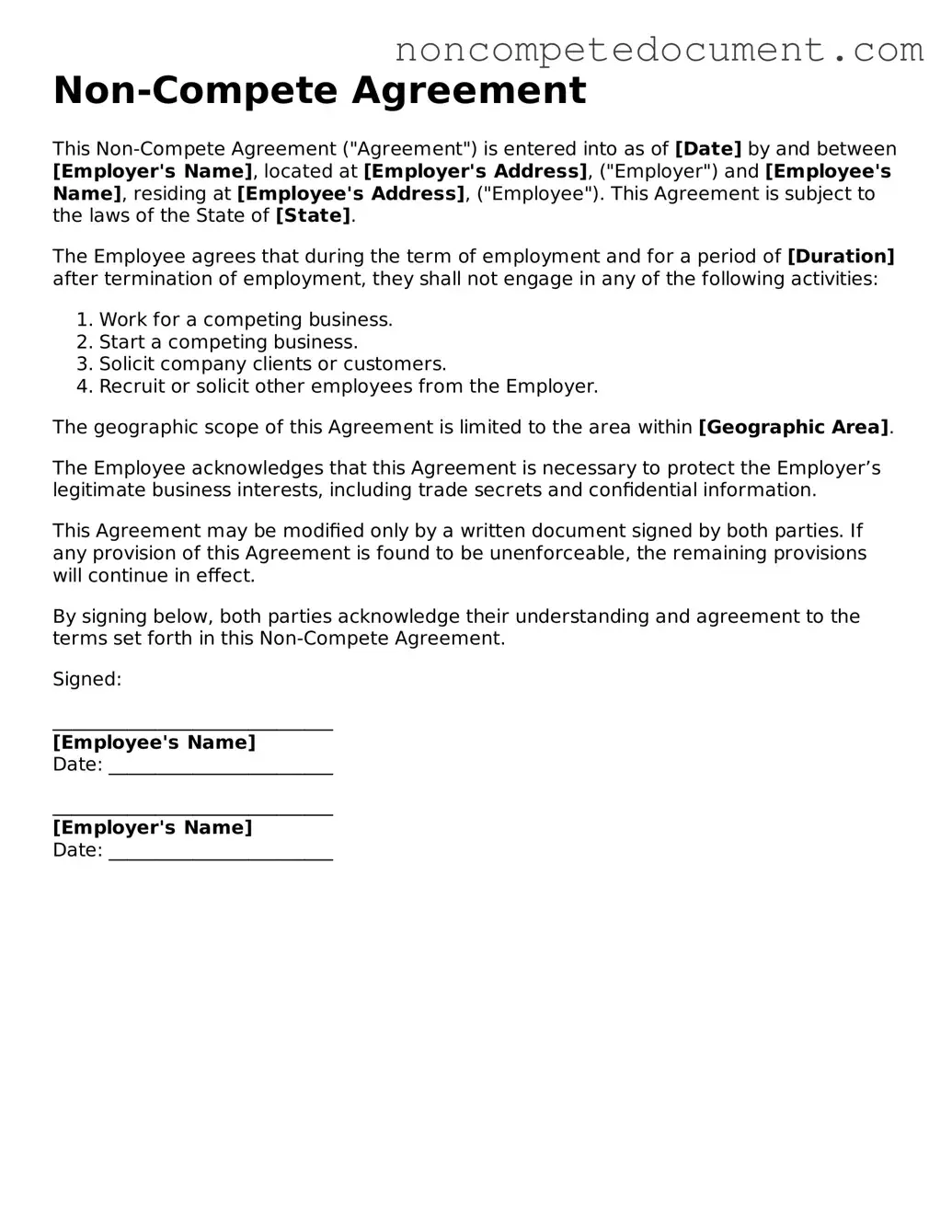Filling out a Non-compete Agreement form can be a straightforward task, but many individuals make common mistakes that could lead to complications later. Understanding these pitfalls is essential for ensuring that the agreement is valid and enforceable.
One frequent mistake is not reading the entire document before signing. Many people skim through the agreement without fully understanding the terms. This can result in agreeing to clauses that are overly restrictive or not in their best interest.
Another common error is failing to specify the duration of the non-compete. Without a clear timeframe, the agreement may be deemed unreasonable. It is important to outline how long the restrictions will apply to avoid potential legal challenges.
Some individuals also neglect to identify the geographic scope of the non-compete. An agreement that does not clearly define the area in which competition is restricted can lead to confusion and disputes down the line. It is crucial to be specific about the locations covered by the agreement.
Additionally, people often overlook the importance of consideration. A Non-compete Agreement must provide something of value in exchange for the employee’s agreement. Without this, the contract may not hold up in court.
Another mistake is using vague language in the agreement. Terms that are ambiguous can create loopholes and lead to misunderstandings. Clear and precise language helps ensure that both parties understand their rights and obligations.
Some individuals also forget to consult with a legal professional. While it may seem unnecessary, getting legal advice can help clarify complex terms and ensure that the agreement complies with local laws. This step can save time and money in the long run.
Lastly, failing to keep a copy of the signed agreement can lead to problems. It is vital to retain a copy for personal records and future reference. Without documentation, individuals may find it challenging to enforce their rights or defend against claims.
